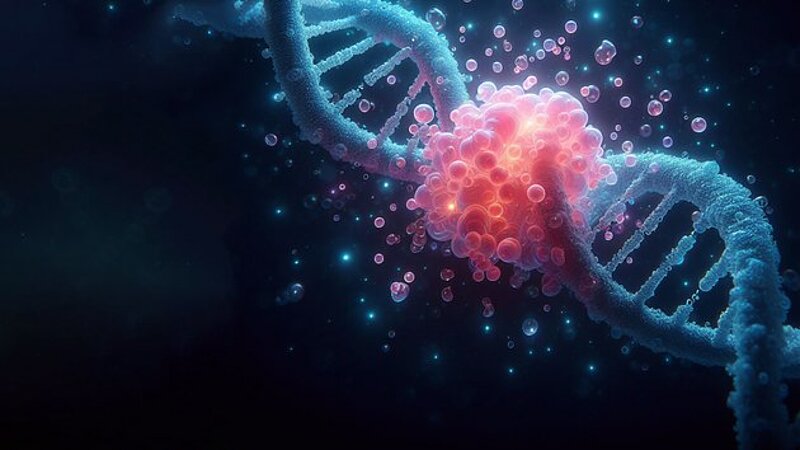New findings by researchers in Dresden have solved the long-standing question of how broken strands of DNA stay together. The discovery was led by Simon Alberti of the Biotechnology Center (BIOTEC), also a PoL member, with crucial biophysical support from PoL group leaders Jan Brugués and Marcus Jahnel.
Cells have protection against the numerous forms of DNA damage, such as nucleotide base modifications or DNA-RNA hybrids. However, double-stranded breaks (DSB) represent the most detrimental form of damage and may lead to cell death if unresolved. This study reveals that the protein PARP1, the DNA damage sensor, acts as a first responder at the DSB site, and will promote damage signaling and eventual repair. PARP1 proteins will travel along the DNA strands to identify signs of damage. Once a DSB is found, individual PARP1 proteins will connect with one another to form an ‘underwater superglue’, keeping the DNA ends together.
To allow the repair to occur, a biomolecular condensate is formed surrounding the damage site. This condensate, which is a dynamic droplet formed by the abundant RNA-binding protein FUS, holds the two broken DNA ends together against mechanical forces. The mechanical manipulation of these biomolecules and the visualization of single DNA molecules under tension were strongly benefited by the expertizes from the PoL groups of Brugués and Jahnel.
Together, the authors utilized high-end biochemical and biophysical methods including bulk and single-molecule imaging, quantitative biochemistry, and optical tweezers. This was also the first time a specific DNA damage and repair scenario was replicated outside of cells, a significant breakthrough in DNA damage research. Not only limited to the DNA damage and repair field, the research presented here has broader implications for the cancer research community. As PARP1 is already established as a target for cancer therapies, inhibition of the protein can selectively kill off cancer cells. Chappidi et al. have now provided a molecular basis for this therapy, though further research is required to confirm the mechanism of impairing PARP1 and subsequent cancer cell replication. All in all, this study highlights an excellent example of higher-order functionality of collective protein behavior, and a valuable asset for further investigations in cellular damage repair.
Read the complete press release on the CMCB website.
Original publication:
Nagaraja Chappidi, Thomas Quail, Simon Doll, Laura T. Vogel, Radoslav Aleksandrov, Suren Felekyan, Ralf Kühnemuth, Stoyno Stoynov, Claus A.M. Seidel, Jan Brugués, Marcus Jahnel, Titus M. Franzmann, Simon Alberti
PARP1-DNA co-condensation drives DNA repair site assembly to prevent disjunction of broken DNA ends
Cell, 2024, Published online February 5th, 2024.
